Here is mine,
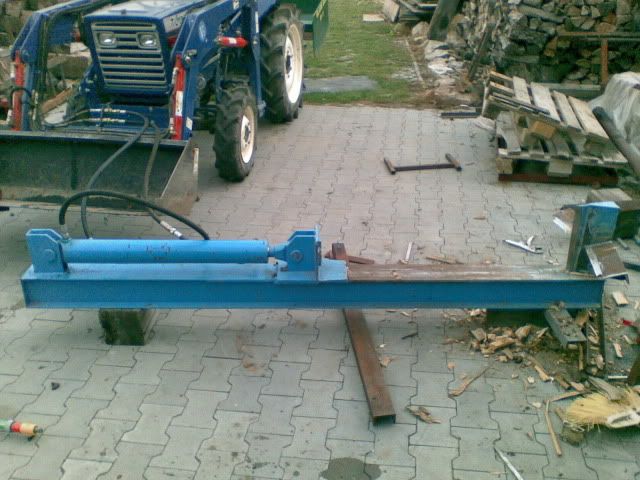
It came up for sale for 300$, no way i could resist that pricetag so i dumped my building plans. The guy is metalworker/welder as profession and had different types of home-build tractors and implements standing in his garden which all were kind of over-build.
What is nice about his construction is the use of 2 narrow I beams instead of 1 normal beam. This reinforces the whole thing and is more torsion resistant. And another thing is that you easily can make a slip-in adjustable wedge, which is a problem with conventional I beam constructions.
The cylinder is a 4.5"/1.5", 33"stroke. Tractor hydraulics running at 3000psi relief that gives 21.6 tons of push. Cycle time is slow at 15 seconds with the limited tractor hydraulics but.. sufficient for a home-owner. I do not really plan on having any valves installed on the splitter itself. I can position the tractor in such a way that the controls are at the right place to be operated.
Reality test using my knotty remainders. Oak, locust, ash and wallnut pieces ranging from 3ft straight to 20"round and even some small rootballs. All went through with the wallnut being the hardest. (all were knotty in some degree) I monitored the pressure gauge and 90% of the splitting happens below 150 bar (2100psi) .And in each case it went above 150 bar it meant blocking, not splitting (yep 21ton stalled ).
).
A trick is to keep the block under pressure and whack it with a splitting maul. (lengthwise) Old trick i saw years ago and it still works. Now with 21 tons pressing you can see the beam bending a bit, but everything holds up. Looks as he knew his specs.
Now with 21 tons pressing you can see the beam bending a bit, but everything holds up. Looks as he knew his specs.
With 50 bar left I guessed that a 4 way wedge is an option for my splitting needs. So out came the welder and short time later the 4 way was working.
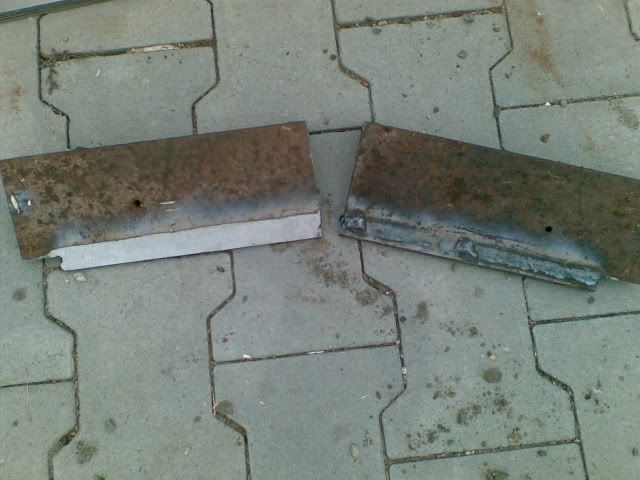
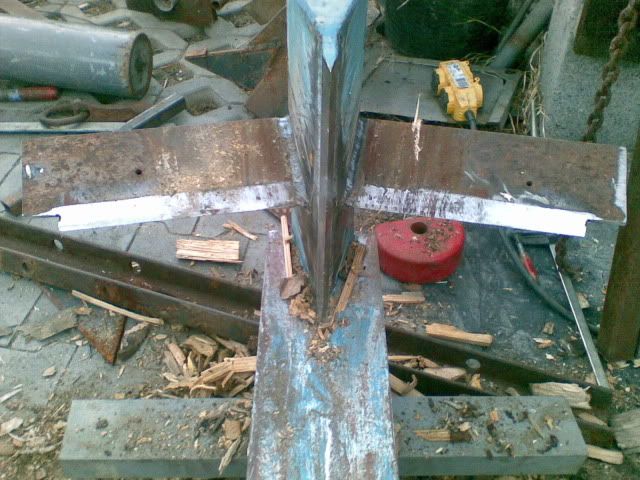
Just a couple of thoughts and tips:
- vertical knive at 80 degrees to avoid the wood coming up when splitting.
- actual wedge starts 1 inch behind cutting edge and is positioned at 110 degrees to have the splitting forces starting at 1 side of the wood.
- Horizontal knives start at point that the vertical wedge has broken the vertical split. You need to watch your vertical knive and wedge action before you know where this point is. If you do this correctly you create a sequence of actions instead of a possible too big full impact of both vertical and horizontal knives and wedges. (cut vert.--> wedge vert. --> cut hor.--> wedge hor.---> push through) That should allow not needing much more power as when only using a vertical knive.
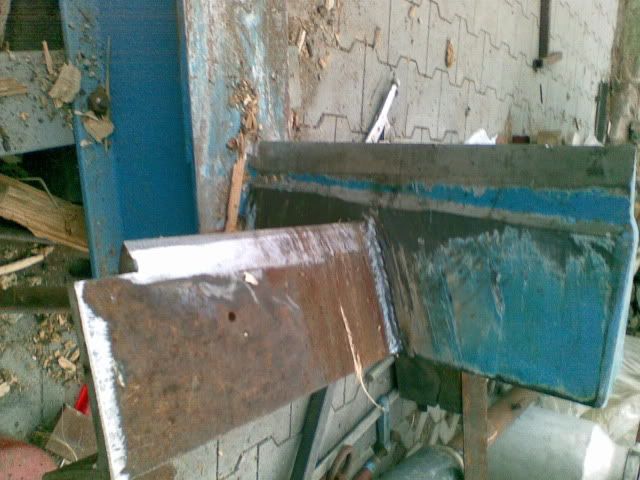
Tried the 4 way on a couple of pieces and it works great. Have some cubic meters of wood to split tomorrow, i'll keep you updated.
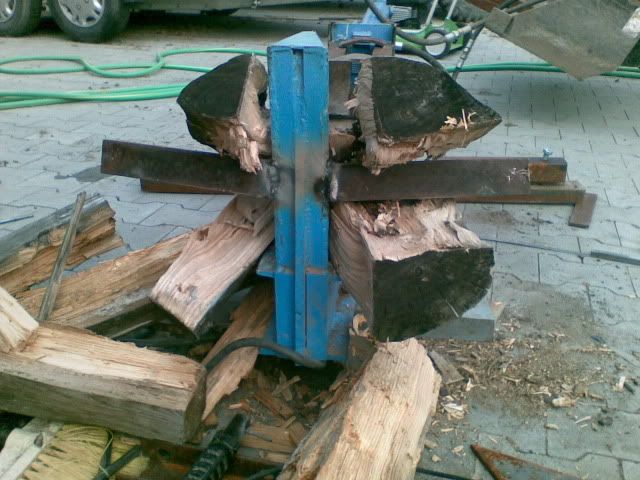
Not sure yet if i'll make it a 3pt mount or find an axle and make it towable. I see the benefit in the 3pt that the height is adjustable, but this thing is 7 ft long and heavy to sway behind a small tractor.
A table would be nice also.
So, give me your thoughts, I've been reading a bunch of splitter threads but guess each one has its specifics.
Guess the question is now what you all would add or change and why. I have no plans on commercial use, just the idea to go around the village to help out the elderly here. Although they might consider it normal it is a painfull sight to me to see them swing their maul for 2 weeks every year.


It came up for sale for 300$, no way i could resist that pricetag so i dumped my building plans. The guy is metalworker/welder as profession and had different types of home-build tractors and implements standing in his garden which all were kind of over-build.
What is nice about his construction is the use of 2 narrow I beams instead of 1 normal beam. This reinforces the whole thing and is more torsion resistant. And another thing is that you easily can make a slip-in adjustable wedge, which is a problem with conventional I beam constructions.
The cylinder is a 4.5"/1.5", 33"stroke. Tractor hydraulics running at 3000psi relief that gives 21.6 tons of push. Cycle time is slow at 15 seconds with the limited tractor hydraulics but.. sufficient for a home-owner. I do not really plan on having any valves installed on the splitter itself. I can position the tractor in such a way that the controls are at the right place to be operated.
Reality test using my knotty remainders. Oak, locust, ash and wallnut pieces ranging from 3ft straight to 20"round and even some small rootballs. All went through with the wallnut being the hardest. (all were knotty in some degree) I monitored the pressure gauge and 90% of the splitting happens below 150 bar (2100psi) .And in each case it went above 150 bar it meant blocking, not splitting (yep 21ton stalled
A trick is to keep the block under pressure and whack it with a splitting maul. (lengthwise) Old trick i saw years ago and it still works.
With 50 bar left I guessed that a 4 way wedge is an option for my splitting needs. So out came the welder and short time later the 4 way was working.


Just a couple of thoughts and tips:
- vertical knive at 80 degrees to avoid the wood coming up when splitting.
- actual wedge starts 1 inch behind cutting edge and is positioned at 110 degrees to have the splitting forces starting at 1 side of the wood.
- Horizontal knives start at point that the vertical wedge has broken the vertical split. You need to watch your vertical knive and wedge action before you know where this point is. If you do this correctly you create a sequence of actions instead of a possible too big full impact of both vertical and horizontal knives and wedges. (cut vert.--> wedge vert. --> cut hor.--> wedge hor.---> push through) That should allow not needing much more power as when only using a vertical knive.

Tried the 4 way on a couple of pieces and it works great. Have some cubic meters of wood to split tomorrow, i'll keep you updated.

Not sure yet if i'll make it a 3pt mount or find an axle and make it towable. I see the benefit in the 3pt that the height is adjustable, but this thing is 7 ft long and heavy to sway behind a small tractor.
A table would be nice also.
So, give me your thoughts, I've been reading a bunch of splitter threads but guess each one has its specifics.
Guess the question is now what you all would add or change and why. I have no plans on commercial use, just the idea to go around the village to help out the elderly here. Although they might consider it normal it is a painfull sight to me to see them swing their maul for 2 weeks every year.





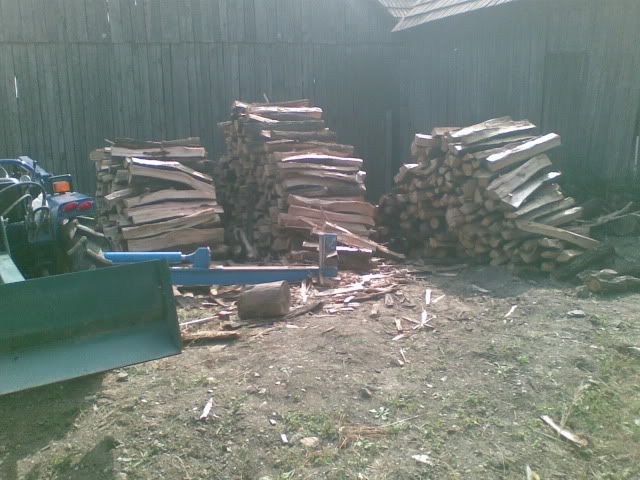
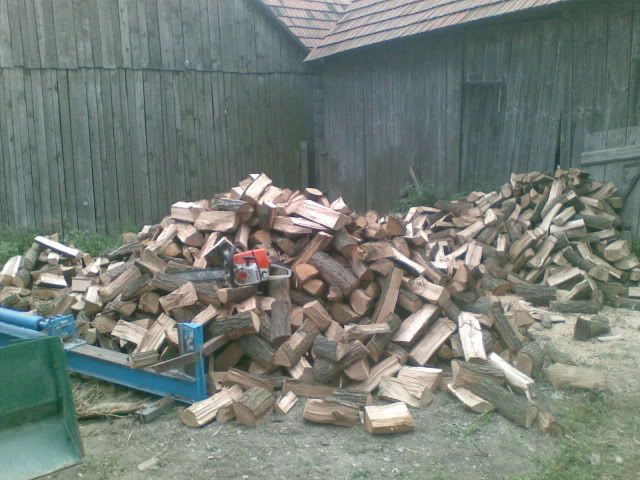


 Now to answer your questions,..
Now to answer your questions,..




